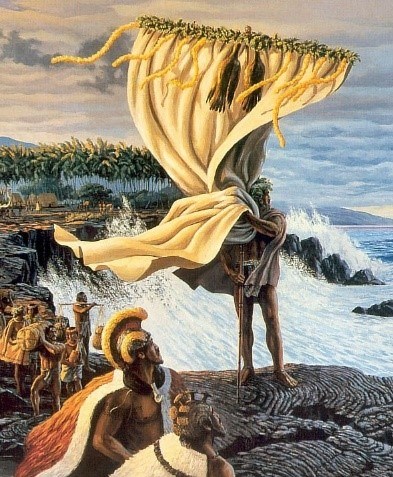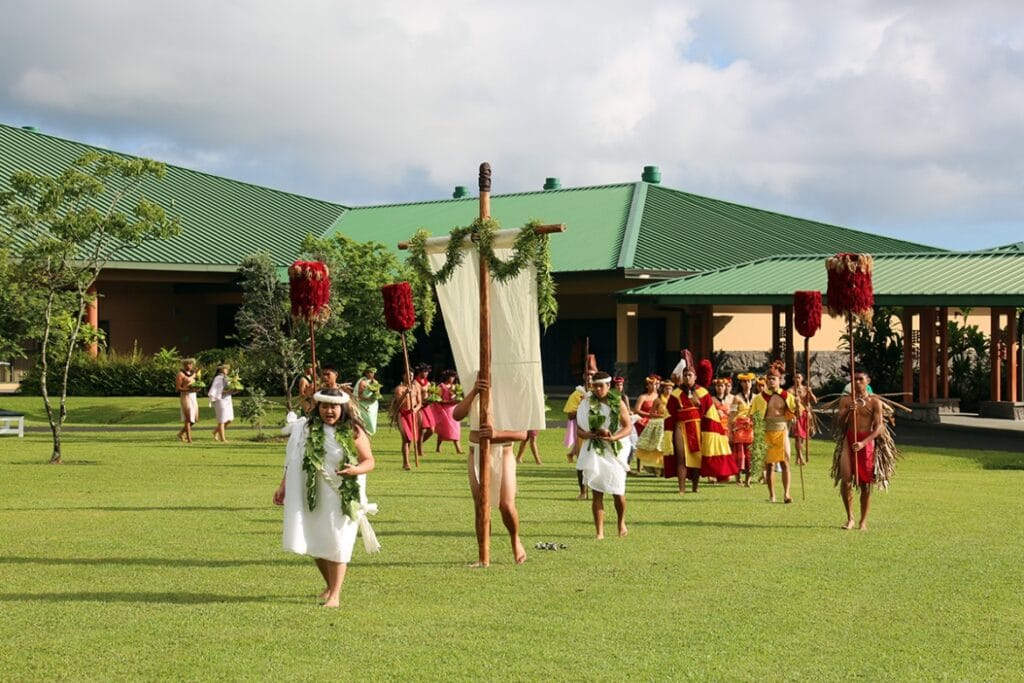It’s that time of year again. The sun is rising a little bit later and setting into the November sky earlier every day. Here in Volcano, Hawai’i, we’ve even been warming ourselves by the fireplace at night!
The harvest season is on the horizon and preparations for Makahiki have begun!
Although you may have heard it referred to as the “Hawaiian Thanksgiving,” this is an inaccurate description of Makahiki. Lasting for around four consecutive lunar months, Makahiki is actually the ancient Hawaiian New Year festival. It also signifies a season of honoring the Hawaiian god Lono, one of the four primary gods recognized in Hawaiʻi, as well as throughout the Pacific.
The rising of Makaliʻi (the constellation Pleiades) at sunset signifies that the year is drawing to an end. Also known as M45 or the Seven Sisters, the Pleiades star cluster is visible from practically every corner of the world and resembles an obscure dipper of stars. This year, Pleiades will rise at sunset on November 17th.

A Time of Celebration & Harvest
In ancient Hawai’i, temple priests on the west side of each island would search the eastern sky for the first Hilo moon (crescent moon) that occurred after the rise of Makaliʻi. That would mark the beginning of Makahiki – And this year, you can expect to see the Hilo moon on December 4th)!
And Makahiki would typically come to a close in late January or February, when the rainy season arrived.
During Makahiki, Lono was celebrated as the god of agriculture, fertility, music, rainfall, and peace with storytelling, hula, feasting, as well as competing in sport and games. Each year, his image was placed at the top of a long pole with a crosspiece just below, from which banners of white kapa, feather lei, and stuffed pelts of the kaupu bird hung.
Lono’s image was carried clockwise along the coast of the island throughout the season, with celebrations commencing just before his arrival and ending at his departure. Since Makahiki was a season of peace and plenty, war between the aliʻi was forbidden while relaxation and games were prolific. The kapu on war and labor, as well as participation in the feasting and games, would only be in effect during the time the pole of Lono was in a district.
Traditionally, Makahiki was a time of pride, reflection, rest, and prayer for the ʻāina (land) and the people alike. The priests prayed to Lono for the ʻāina’s fertility, while the commoners prayed for the health of themselves and their chiefs, as well as growth and prosperity for their chief’s land.
Makahiki was also a celebration of the harvest, which is likely where the confusion over “Hawaiian Thanksgiving” originated. Makahiki can also refer to the ceremonies and sports observed during this holiday, including spear throwing, holua sledding (sled riding on land), heihei kūkini (racing), mokomoko (boxing), hākōkō (a wrestling match similar to sumo), pūhenehene (a skilled-game of deception), kōnane (a board game resembling chess), and other games and activities to entertain the district’s people.
At the end of the celebration, an ali‘i impersonating Lono would take a canoe out to sea and return to shore for a mock battle, in which men threw spears at the ali‘i. If he dodged the spears, divinity would be proved and someone would then touch the ali‘i’s chest with a spear to signify the ritual death of Lono. The ali‘i would then sacrifice a pig in Lono’s honor, before setting a canoe full of offerings adrift into the deep blue… and eventually the mystical land of Kahiki.
Across Hawai’i, each district aimed for abundance, enabling them to share the best of their harvest and hand-crafted products during Makahiki. The celebration served as an opportunity to both strengthen existing bonds and build new relationships. With the holiday season fast approaching, we can all appreciate how important this – Perhaps now more than ever!

Happy Makahiki Season
As Makaliʻi rises in the eastern sky this week, we can let Makahiki remind us to spend quality time with family, reconnect with our friends and our community, and welcome new beginnings with an open heart.
If you’re planning a trip to Hawai’i Island during Makahiki season, we invite you to book your stay at our charming vacation rentals, Tutu’s Place and the Ola’a House, where you can rest, play in Hawai’i Volcanoes National Park, feast on delicious, local food, and share the abundance of the Big Island.
Wishing you a healthy, happy Makahiki season!
